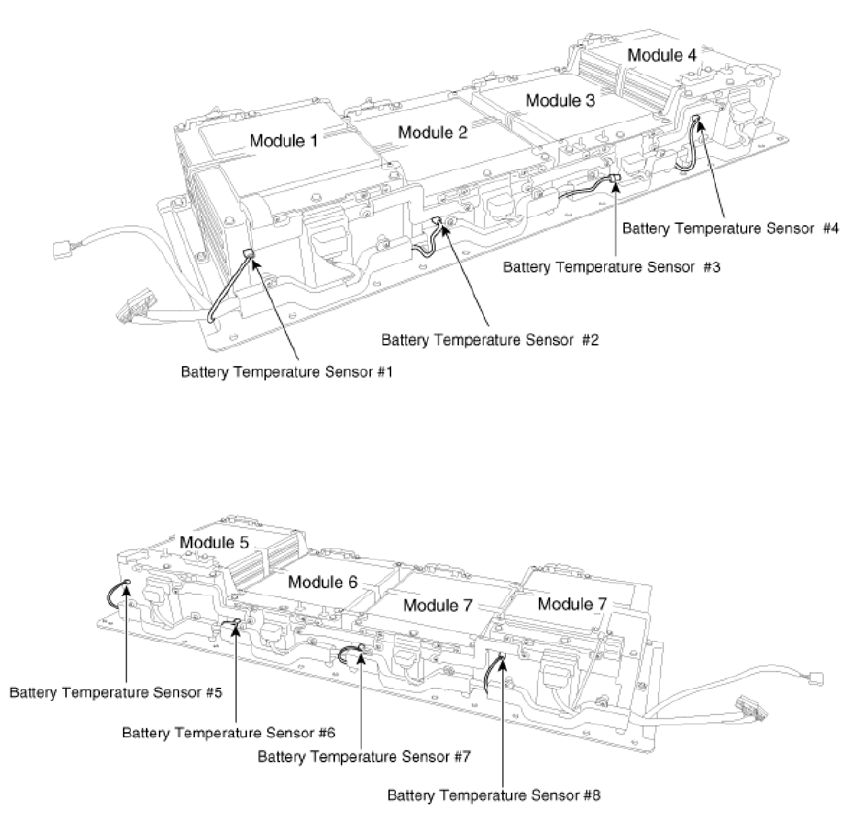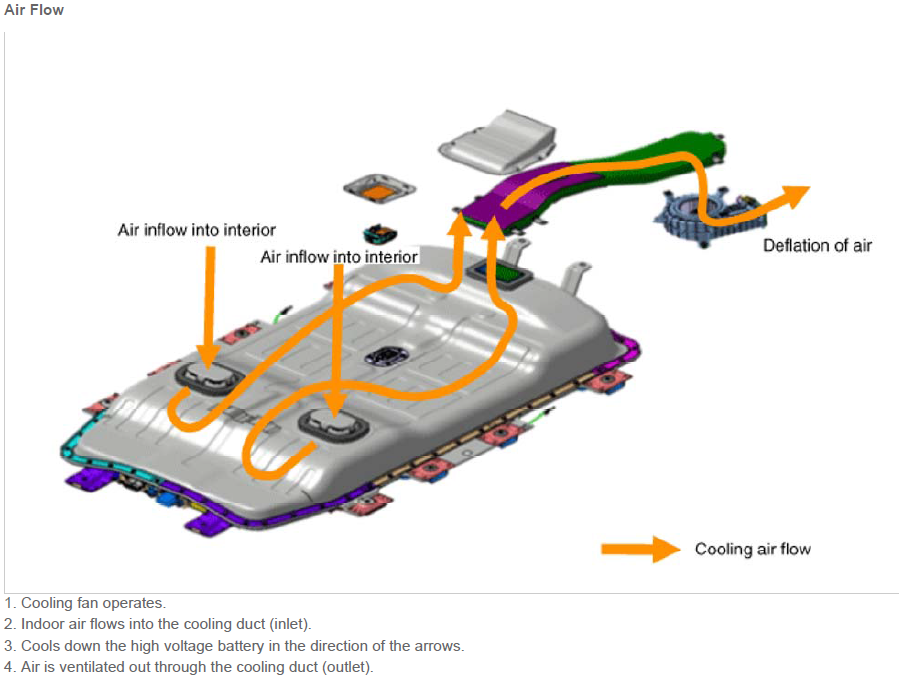TyrelHaveman
Well-known member
Anyone here who has access to the service manual (I'd love to get the PDF(s) myself!), there's probably a diagram that shows the locations of the temperature sensors. I know the LEAF has such a diagram.

SiLiZiUMM said:On 2105 (7EC) line 23 byte 3 we usually see a 0, I've seen 0x01 during charge (fan status?). I've got a 0x02 there too (on the very last charge). For sure it's a bitfield.


JejuSoul said:This has been mentioned before but I wanted to mentioned it again because these incorrect labels are being carried across into our software.
There is a translation error in the English version of the Battery Management System Data. This error is not in the German version.
The terms Accumulative Charge Power and Accumulative Discharge Power are used in the English version of the Kia Diagnostic System Software.
We have copied these terms from the 'official' source. But both of these values represent energy not power.
The names should be Cumulative Charge and Cumulative Discharge.
The word Cumulative is better here than Accumulative. So we should also change
Accumulative Operating Time to Cumulative Operating Time
Accumulative Charge Current to Cumulative Charge Current
Accumulative Discharge Current to Cumulative Discharge Current
My favourite error is the line warning mechanics not to touch the exhaust because it may be hot.TyrelHaveman said:By the way, looking through the service manual, there are a LOT of editors. Clearly they don't spent a lot of time in editing and localization.
JejuSoul said:My favourite error is the line warning mechanics not to touch the exhaust because it may be hot.TyrelHaveman said:By the way, looking through the service manual, there are a LOT of editors. Clearly they don't spent a lot of time in editing and localization.
JejuSoul said:I opened a new thread to discuss a Battery Ageing Model http://www.mykiasoulev.com/forum/viewtopic.php?p=2565
SiLiZiUMM: I would be interested to see more data from your recent journey.
for example - did you monitor battery data in real-time throughout the journey?
did you notice any difference in cell balancing between the L3 and L1 chargers?
is deterioration more likely during driving or charging? L3 or L1?
can you post the deterioration data before and after this trip,
to answer the question does 1000km in three days cause more deterioration than 1000km in three weeks.
I don't think we are ever going to have a substantial number of cars providing data given how few Soul Evs exist compared to the number of Nissan 1eafs, so I hope we can create a model using more detailed data from a smaller set of cars.
JejuSoul said:Interesting data.
What surprises me most is how high the average battery temperature gets driving and L3 charging.
Presumably the outside temp is cool, and you already said the fans were on.
This is comparable to the Phoenix Arizona L3 test data for the Nissan 1eaf here - http://avt.inl.gov/pdf/energystorage/DCFC_Study_FactSheet_EOT.pdf
Am not surprised to see that the L1 charging temp is low.
The minimum deterioration is not only less than two weeks ago (2.1), it is less than a month ago (0.8). Yours is the first car to show such improvement. Did you L1 charge to 100% just before the journey. There was a recent article on insideevs.com about a Tesla owner who did this and reduced the deterioration of his battery.
I looked at your data for the cell voltages. It does seem that L1 charging balances the cells best but the difference is marginal.
notfred said:Bad news on the TPMS.
I suspect the 0x37's are either a status flag field or just a delimiter.
Enter your email address to join: